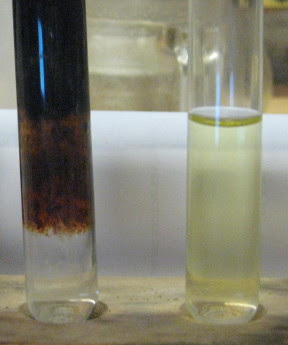| Or you could do a little experimentation and try a direct route from heating MnO2 with excess (NH4)2SO4 and crystallizing the reaction product. The
reaction is messy in the stoichiometry sense, as the 'NH4' goes off as water, nitrogen, ammonia, and sometimes a trace of NOx. You may need to add
extra ammonium sulfate to the workup solution to have enough for the mixed Mn(II)NH4 salt (not an alum, that takes Mn(III)). The mixed Mn(II)NH4
sulfate can be isolate by crystallization; it is more soluble than ammonium sulfate hot, but less when cold, so concentrating until ammonium sulfate
starts to crystallize, filtering hot, then cooling will let you get it out of solution. Yes, there's Mn left in solution, just let that evaporate and
toss it into the next batch of MnO2 + (NH4)2SO4 before heating. Or you may be able to get away with just making sure there's enough ammonium sulfate
in solution, as the procedure you mentioned says to use an excess of it, and taking the filtered solution of the cooled melt. |





















